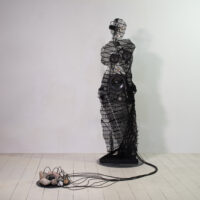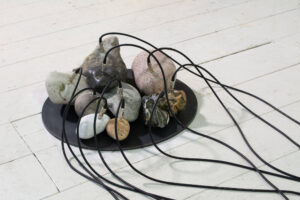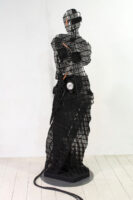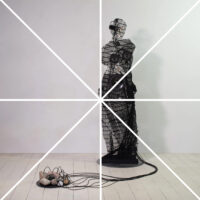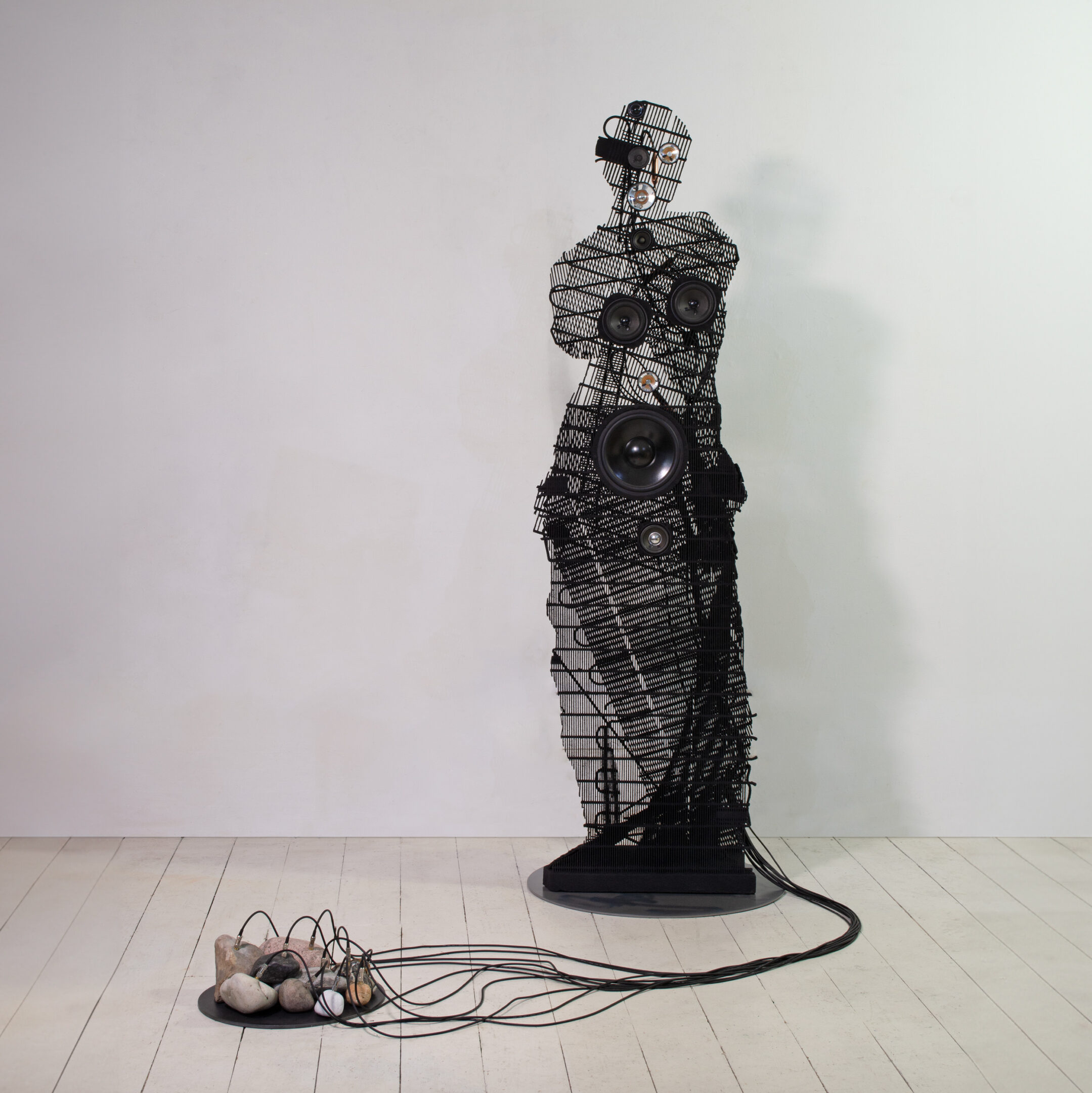
Venus of the Orifices
Fridge coils, tin, loudspeakers, nuts, bolts, audio cables, acrylic paint, black sand, cable ties, steel, stones, Jesmonite. Venus: 180x60x60 cm, Stones: 35x35x10 cm, 2023.
The artwork ‘Venus of the Orificies’, made of refrigerator coils assembled and three-dimensionally modelled, embodies, in its stylised form, the well-known Greek sculpture of the ‘Venus de Milo’. The coils, welded together and covered with black sand, accommodate speakers of various sizes positioned in the ‘orifices’ of the front of the re-imagined Venus. Each speaker, connected to a black audio cable with a jack at the end, becomes a conduit, a place of passage. The ‘rigour’ of the black grids, functional in expressing the idealised harmony of Venus, is broken by the black cables that sinuously unravel from the loudspeakers, passing through the entire structure of the sculpture down to the base, and then connecting to small stones appropriately prepared and positioned in front of the sculpture. The term ‘orifice’, which among other things identifies an opening in the human body, is here interpreted broadly; the loudspeakers also find their place in ‘hidden’ openings, or energy centres, identified by ancient Hindu traditions as ‘chakras’.
Can a stone emit sound? For quantum physics, this is a probabilistic question. Matter at the subatomic level is both a particle and a wave of probability, not in the strict sense of an audible sound wave, but the probability that a given element, an electron for example, is in a given position or ‘state’.
“Trusting in the idealising power of the ‘Venus of the Orifices’ and the probability of the wave, I wait…”
